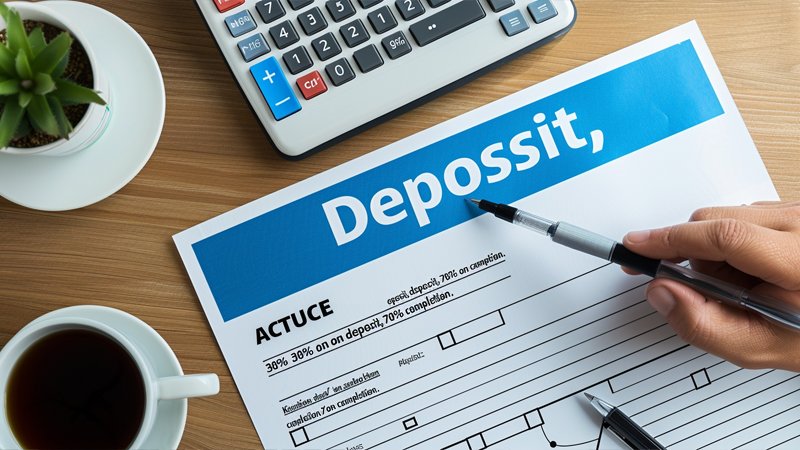
I remember feeling uneasy the first time I discussed payment terms with a new factory in China.
Clear payment agreements with Chinese manufacturers safeguard your cash flow, build trust, and help you avoid production delays or quality issues.
It took me a while to feel confident.
What Techniques Can You Use to Negotiate Payment Terms with Chinese Manufacturers?
Negotiations shaped the foundation of my supplier relationships1.
Begin by setting realistic expectations, highlighting mutual benefits, and proposing incremental adjustments to terms—building trust and mitigating risk together.

When I first negotiated payment terms2, I was worried about sounding too pushy. I learned that presenting transparent goals calmed everyone’s nerves. Chinese manufacturers often want stable, long-term partnerships3, so when you show you’re equally invested in success, it makes them more open to compromises.
One key method is to break your terms into smaller phases—like splitting down payments and final balances—if your order quantity allows it. That way, nobody shoulders all the financial strain at once. A supplier sees they’re guaranteed partial funds early, while you hold back a portion until final inspection. That creates a balanced environment, reducing the tension that can come with big lump-sum payments.
It also helps to establish a personal connection. If possible, visiting the factory or setting up video calls helps the manufacturer sense your dedication. They might then trust you enough to relax initial terms, especially if you mention future bigger orders. Of course, remain polite but firm about what you need. Propose a trial run: maybe a smaller order with slightly relaxed terms. If it goes well, you can scale up and improve the arrangement with each subsequent deal.
In the end, negotiating isn’t about winning or losing—it’s about finding that sweet spot where both parties feel secure enough to move forward confidently.
How Can You Create Favorable Payment Agreements to Secure Your Funds?
I wanted peace of mind that I wasn’t risking everything on a first shipment.
Design layered payment schedules, use escrow or letters of credit, and confirm final inspections. A multi-step approach protects you from potential loss.

When I started, I used a simple 30% deposit, 70% on completion structure. But after a factory delay left me in limbo, I switched to more nuanced strategies. For instance, tying a percentage of payment to hitting production milestones—like finishing 50% of the order—gave me extra leverage. If they missed a milestone, we’d discuss the issue before more funds changed hands.
An escrow service4 can also help. Your money sits in a neutral account, released only when certain conditions—like passing a third-party inspection—are met. It’s a handy method if you’re dealing with a new manufacturer and want an added layer of confidence.
Letters of credit, handled by reputable banks, can also secure your funds. Manufacturers appreciate that they’ll get paid once they provide the correct shipping documents, while you can rest knowing your bank will only release the money if those documents are valid. You might pay a bit more in fees, but the peace of mind can be worth it if you’re sending a large chunk of money overseas.
Ultimately, layering these safeguards—payment milestones5, escrow, or a letter of credit—gives you multiple checkpoints. Each step confirms your order’s progress and quality, easing the financial risk so you can grow your business without constant worry.
What Strategies Improve Payment Processes and Enhance Collaboration Efficiency?
I quickly learned that good communication can prevent messy disputes.
Set clear timelines, maintain open channels, and adopt digital tools for invoicing. When both sides align expectations, payments flow smoothly and trust deepens.

It all starts with clarity. Before production begins, outline your payment schedule in writing: how much is due at each stage, and exactly when. Maybe you arrange for a deposit upon signing, another sum after mid-production inspection, and the final payment right before shipping. Sharing a calendar or timeline with the manufacturer stops confusion about due dates and avoids awkward “Where’s our money?” inquiries.
Communication plays a huge role, too. I like to give regular updates if, for example, my bank transfer might be delayed by a weekend or public holiday. Factories appreciate the heads-up, and it prevents them from halting production over uncertainty. Likewise, if they’re running behind schedule, they should tell you so you can adjust your finances.
Digital invoicing tools can also streamline everything. Instead of emailing back-and-forth for each invoice, you can store them in a shared folder or a specialized platform, so both parties always see the latest version. This transparency reinforces accountability—no one can claim they didn’t see that invoice or misunderstanding about amounts.
By combining these approaches—clear schedules, open communication, and digital management—you slash the stress that often accompanies cross-border transactions. You’ll find both you and your manufacturer can focus on producing high-quality goods and shipping on time, not bickering over money matters.
What Are the Common Payment Terms and Their Suitable Scenarios?
I discovered each structure has pros and cons depending on order size, trust level, and market conditions.
Options like 30/70, 50/50, and letters of credit each fit different risk appetites. Choose based on volume, familiarity with the supplier, and product complexity.

Below is a simple overview:
| Payment Term | When It’s Suitable |
|---|---|
| 30% deposit, 70% before shipment6 | Common for standard orders with moderate trust |
| 50% deposit, 50% final | Good for small or test orders, or when quick turnaround is needed |
| Letter of Credit | Larger, high-value orders needing strong protection |
| Escrow | Early-stage partnerships or e-commerce sales with limited trust |
The 30/70 split is pretty standard—factories get enough upfront to source materials, while you hold a chunk until they’re nearly done. If you’re still building trust, you might push for a smaller deposit, like 20%. But some manufacturers balk at that if they haven’t worked with you before.
For smaller or trial batches, a 50/50 approach can simplify the math. You might pay half to confirm the order and the rest upon completion or even after an inspection pass. This style is especially handy if the product is custom-made or if you’re uncertain about the factory’s capabilities.
Letters of credit come in when the stakes are high—maybe you’re ordering tens of thousands of units. They do add complexity and fees, but the safety net might be worth it. Escrow is similar but typically used for smaller transactions, often in direct e-commerce situations where neither side wants total exposure.
Choosing the right payment term means balancing risk with practicality. The more trust you have in your manufacturer (and vice versa), the more flexibility you’ll likely gain, allowing you to fine-tune these terms for a stable, profitable partnership.
Conclusion
Clear communication, strategic safeguards, and mutual trust help you establish payment terms that protect everyone’s interests when working with Chinese manufacturers.
-
Explore this resource to learn proven strategies that can enhance your supplier partnerships and drive mutual success. ↩
-
This link will provide insights on negotiating payment terms that benefit both you and your suppliers, ensuring smoother transactions. ↩
-
Discover the advantages of long-term partnerships and how they can lead to better pricing, reliability, and collaboration. ↩
-
Understanding escrow services can enhance your financial security in transactions, especially with new manufacturers. ↩
-
Learning about payment milestones can help you negotiate better terms and reduce financial risks in your orders. ↩
-
Explore the benefits of this common payment structure to understand its suitability for your orders. ↩




